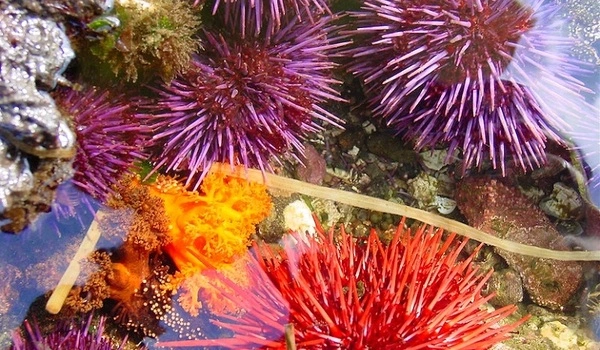The vulnerability of red sea urchins to climate change can vary depending on the specific location and environmental conditions. For example, some populations of red sea urchins may be more resilient to changes in temperature or ocean acidification compared to others in different locations. Additionally, other factors such as food availability and predation pressures can also play a role in determining their overall vulnerability to climate change.
A new study of red sea urchins, a commercially valuable species, looked at how different populations react to environmental changes. The findings show that red sea urchin populations in Northern and Southern California are well adapted to their local environments, but differ in their vulnerability to future environmental changes caused by global climate change and ocean acidification.
According to the new findings, which were published in Science Advances, red sea urchin populations in Southern California may be more vulnerable to climate change than those in Northern California. Although sea urchins in Southern California are already adapted to warmer temperatures, the researchers believe that further warming of their environment may be too much for them.
“Red sea urchins from the Southern California population were much more sensitive to environmental changes than those from Northern California, and we think that is likely because they are already closer to some kind of thermal limit,” said senior author Kristy Kroeker, professor of ecology and evolutionary biology at UC Santa Cruz.
Red sea urchins are an important fishery species along our coast, so understanding how climate change will affect them is critical.
Kristy Kroeker
Emily Donham, who led the study as a UCSC graduate student and is now a postdoctoral scholar at UC Santa Barbara, is the first author. “Red sea urchins are an important fishery species along our coast, so understanding how climate change will affect them is critical,” she said.
The researchers investigated the effects of three key environmental variables in the coastal habitat of sea urchins: water temperature, dissolved oxygen, and pH. (a measure of ocean acidification). Climate change caused by increased carbon dioxide levels in the atmosphere warms the oceans and reduces oxygen levels in the water, while increased carbon dioxide absorption by seawater causes ocean acidification.
According to Kroeker, most studies on species adaptation to climate change have concentrated on a single aspect of environmental change, such as warming or ocean acidification. “However, all of these species that we are concerned about are embedded in environments that have multiple variables that will be impacted by climate change,” she explained.
The researchers first characterized the current conditions in Northern and Southern California kelp forests using a network of sensors deployed along the coast. Because of strong seasonal upwelling in the north, which brings cold deep waters with low dissolved oxygen and pH to the surface, there are significant differences between the coastal waters of Northern and Southern California. Southern California has much weaker coastal upwelling.

As a result, Northern California sea urchin populations are already subjected to more acidic, less oxygenated, and colder conditions than Southern California waters. In the future, however, both regions will have warmer, more acidic, and less oxygenated waters than they do now.
The researchers grew juvenile sea urchins from the two regions in outdoor tanks at UCSC’s Long Marine Laboratory, where they could control the conditions in each tank, to study the sensitivity of red sea urchins to these changing conditions.
The experiments exposed sea urchins from both populations to the average conditions in each of the two regions for temperature, dissolved oxygen, and pH. The results clearly showed that red sea urchin populations are adapted to their home environments and experience increased mortality when raised in different conditions. Southern California sea urchins fared poorly under Northern California conditions, and vice versa.
The researchers also exposed red sea urchins to the future conditions expected for their home regions based on regional climate projections for the year 2100. These future conditions generally do not overlap with the range of conditions currently measured along the coast.
Although mortality increased in both populations under the projected future conditions, Northern California sea urchins experienced lower mortality and had better body conditions than Southern California sea urchins.
“Despite the Northern California populations being in more acidic, lower-oxygen conditions in the future, it was the Southern California populations that were much more impacted,” Kroeker said.
This was a surprise, she said, because the Northern California populations are adapted to seasonal changes in which temperature, dissolved oxygen, and pH all decrease in concert, whereas with climate change this tightly coupled variation, or “covariance structure,” will be broken. Although dissolved oxygen and pH will continue to fall, temperature will rise.
“Because it is destroying the environmental covariance structure to which they are adapted, we predicted that they would become more vulnerable. But that’s not what we discovered “Kroeker explained.
According to the findings, water temperature is an important environmental variable for red sea urchins. With warmer temperatures already in place, the coastal waters of Southern California may not need to warm up much further to become inhospitable to red sea urchins.
“We should not assume that a species’ vulnerability to climate change is the same across its entire range,” said Kroeker. “Each population is adapted to local conditions, and not all populations will respond to global climate change in the same way.”





